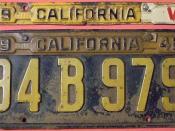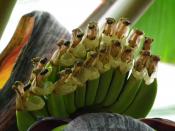SALADS Most North Americans can remember when the choice of salad greens was limited to iceberg or Boston bib lettuce. Even today in small towns, iceberg lettuce is the "salad ". Iceberg is sturdy and lasts for weeks if properly refrigerated, but unfortunately lacks taste - it is bland! Today people are gastronomically adventurous and look for interesting salads, salad combination, textures, and flavors. Large grocery chains and small gourmet greengrocers offer a respectable range of salads, albeit not always very fresh. Locally grown salads harvested the morning and served at lunch latest at dinner are the best. Greenhouse-grown salads look very tempting, are always clean, but taste-free due to hygienic environments in which they grow. Wilted salads, or those with brown stems should be rejected. A salad must look vibrant, firm, appetizing, and be free of any brown spots or cracks. Salads aid digestion, provide fiber and diversity in both taste and texture.
You can buy mesclun (a Provencal name for a mixture of salads consisting of arugula, raddichio and baby romaine leaves) but they are not always as fresh as they should be. A BIB LETTUCE - small, smooth, and silky deep-green leaf salad. Can be served on its own or in mixtures.
The true origins of the Banana, world's most popular fruit, are to be found in the region of Malaysia. By way of curious visitors, bananas traveled from there to India where they are mentioned in the Buddhist Pali writings dating back to the 6th century BCE. There are two main varieties of bananas, the fruit or sweet banana and the plantain. The fruit banana is eaten raw out of hand when it turns yellow and develops a succulent sweetness with a soft, smooth, creamy, yet firm pulp. The plantain, a cooking banana, is also referred...

![[California delegates cheering on stagecoach at the 1912 Republican National Convention held at the Chicago Coliseum, Chicago, Illinois, June 18-22, 1912] (LOC)](https://s.writework.com/uploads/9/94858/california-delegates-cheering-stagecoach-1912-republican-na-thumb.jpg)
